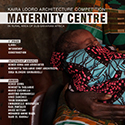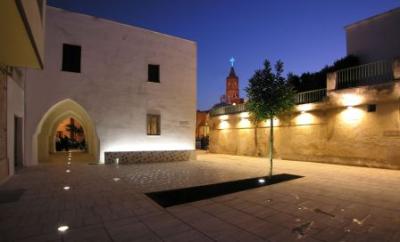PROGETTI >> REALIZZATI
FALLONI SQUARE
PROGETTISTA: Maurizio Bradaschia
- Year:: 2010
- Category:: PUBLIC SPACE
- Customer:: Comune di Monteiasi (TA)
- Viewed: 1301 TIMES
DESCRIZIONE: Puglia is an extraordinary place. Solar, harsh, blue. The sun, exaggeratedly Mediterranean, strongly influences and describes the places, the...
Puglia is an extraordinary place. Solar, harsh, blue. The sun, exaggeratedly Mediterranean, strongly influences and describes the places, the humanized spaces and its nature. This nature is characterized by white calcareous rock which exalts the colours of the sky and the sea when they meet on the horizon.
The places, cities and villages are sun-washed, morphologically and typologically referable to plants famous of this Mediterranean area's history. Miletus, Ghardaia, Greek and Croatian coasts are recognizable in their urban stretches.
Monteiasi is in the middle of the region, near Taranto, a few kilometres from the Ionian Sea. Between Taranto and Grottaglie (town known for its caves and pottery).
Going down the freeway which connects Taranto to Grottaglie, Monteiasi suddenly and unexpectedly appears, after a quick passage on a hummock by which the panorama is dominated.
The Town Hall is the first building you find along the main street, which faces onto the Chiesa di San Giovanni Battista and, after a dozen or so of metres, the council house, facing onto Piazza Falloni, the site of the project.
This is the heart of the inhabited centre of Monteiasi, an urban knot around which the main public and private buildings of the little town are gathered: Palazzo Ducale, Ex Townhall and Chiesa matrice together with Torre dell'Orologio.
The square is moderate: two hundred and fifty square metres enshrouded by dense buildings which conform to a sort of "city planning" of internal open spaces, composition of courtyards", in a typically Southern urban construction, with a reserved character sometimes almost introverted .
Before the recent upgrading intervention, the square was in a state of imminent degradation. The square was open to traffic and characterized by a sort of patchwork of different pavings, patched up over time (clinker, asphalt, concrete and so on ). Kerbstones and steel sleeping policemen, fortuitous plantations of trees, an unhomogeneous lighting system and, lastly, untidy random parking spaces ended the scene.
During 2005, the Town Council decided to start from the upgrading of city's historic centre. It chose to start with Piazza Falloni, the symbolic place of the centre: even the former Townhall was facing onto this square. In this way a national call for bids was advertised (former Merloni law) and the tender was won by Studio Bradaschia of Trieste which decided to avail, in the place, of the collaboration of Studio Netti Valente in Bari.
The financing was scarce: 60.000 Euros on the economic front, with a not more than 40.000 Euros for works.
The recovery project idea of this part of the town is very simple: redesigning the space thus making it united and pedestrian and at the same time realizing a parking area congruent with the memory of the site.
The language chosen to re-adapt this space moves wisely between tradition and innovation, creating a contemporary space in continuity with the history of the place. A space able to catch and convey the atmosphere, the emotions, the colours, of the square in its context.
The colour – aesthetic choice is almost forced: calcareous rock of Trani. White and beautiful, refined such as only pure calcium carbonate can be, and harmonious, in the pale colours of the building in Puglia, and, still, almost reflecting the blues and the azures.
Considering the exiguity of the space, it was opted for a design tailored to the paving texture. The idea was to evoke the rocky courses of the monuments of the famous baroque of Lecce, the geometry of the vernacular architecture of Taranto's old city facing the "small sea" (the small internal gulf where fishing boats shelter). To emphasize the place. Still few signs. A central "carpet", to bound with a small green flower-bed where a symbol-tree will grow, a maritime pine, the tree of the Italian Mediterranean coasts but not only (Croatian, Dalmatian, French, Spanish, but also Greek). And a seat, a bench, to remind one of the "seats": as the historical municipal building was called. Here people met, sitting, along the street, to discuss, politics and anything characterizing life in the small pre-television communities. And, lastly, the introduction of pottery, the local craft, the material produced locally, small tesserae in green pottery (emeralds), to make the central "carpet" of the square precious.
Minimalist lighting – aimed at highlighting the chromatisms and the volume of empty space, or better, of empty spaces (the square, the porch, the urban space) – completes the project.
A poetical project, which teaches how it is possible to significantly improve the daily spaces of our existence, even by little gestures, of familiar lexicon.
















































